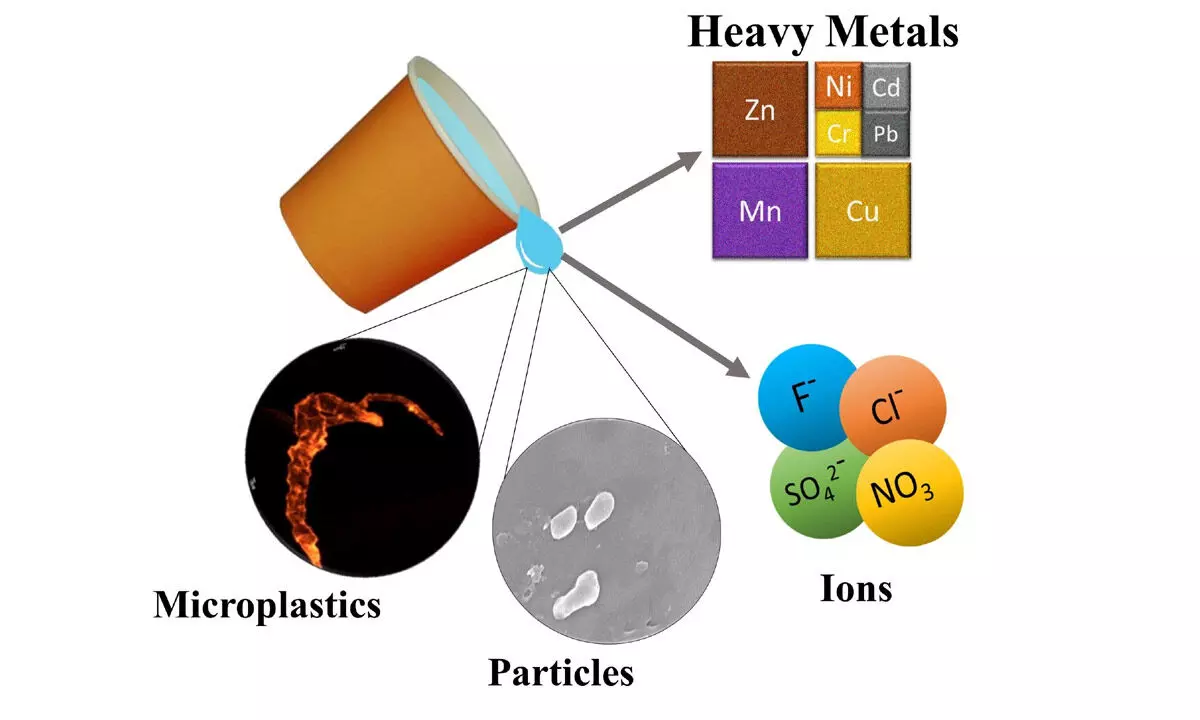Dangers of disposable paper cups: Beware! It's no more a cup that cheers

Dangers of disposable paper cups: Beware! It’s no more a cup that cheers
- Research indicates paper cups as preferred choice for consumption of beverages is dangerous
- A study by IIT Kharagpur confirmed that the hot coffee, tea or any other liquid served in paper cups contain contaminated particles due to degradation of micro-plastics and other hazardous components from the lining material of the cup
Hyderabad: Disposable paper cups have become popular and there has been aggressive marketing strategies to promote them in place of plastic cups and glasses saying that plastic is health hazard. But now research indicates that the paper glasses are no less dangerous and could cause serious health hazards in the long run.
In first of its kind research published in 'Journal of Hazardous Materials' by the Indian Institute of Technology (IIT) Kharagpur, it has confirmed that the hot coffee, tea or any other liquid served in paper cups contain contaminated particles due to degradation of micro-plastics and other hazardous components from the lining material of the cup.
The paper cups are usually lined by a thin layer of hydrophobic film which is made of mostly plastic (polyethylene) and sometimes co-polymers to hold the liquid in the paper cup.
As per the latest report by The International Market Analysis Research and Consulting Group, titled "Paper Cups Market: Global Industry Trends, Share, Size, Growth, Opportunity, and Forecast 2023-2028," the global paper cups market size reached 263.8 Billion Units in 2022. According to IMARC statistics, paper cups market size of India reached 22.00 Billion units in 2022, expecting the market to reach 25.65 Billion Units by 2028, exhibiting a growth rate (CAGR) of 2.50% from 2023 through 2028. The disposable cups are made of paper and lined with wax/plastic to prevent liquid from soaking the paper.
Various disposable cups include foam cups, paper cups, and plastic cups. In fact, there are doubts about the manner in which the paper sheets used for manufacturing cups are made. It is suspected that the water used for mixing the pulp is polluted and even the process of mixing the pulp is not scientific.
Dr Sudha Goel, Professor at the Department of Civil Engineering, and research scholars Ved Prakash Ranjan and Anuja Joseph, studying Environmental Engineering and Management in Civil Engineering department, stated that, 25,000 micron-sized micro-plastic particles are released into 100 ml of hot liquid if the liquid remains in the paper cups for 15 mins. Thus, on an average person drinking three regular cups of tea or coffee daily would be ingesting 75,000 tiny micro-plastic particles which are invisible to the human eyes.
Speaking to Hans India, Ved Prakash Ranjan, who led the research, stated that as most of them are unaware of the ill effects of hot/cold beverages consumed in disposable paper cups. He said micro-plastics can act as carriers for contaminants like ions, toxic heavy metals such as Palladium, Chromium, and Cadmium, and organic compounds and when ingested, the health implications could be serious. This could result in diseases like diabetes and cancer.















